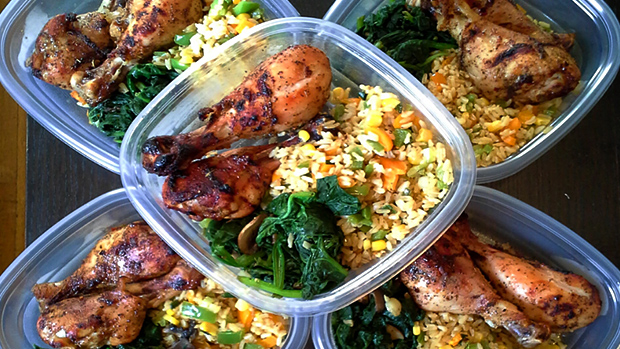Nutrient partitioning is the process by which the body decides what to do with the energy you get from your diet. When you eat something, the nutrients are either burned or they're stored for future use. Ideally, you'd like all those nutrients to be partitioned to muscle as opposed to body fat. That's why the old statement that "a calorie is a calorie" isn't really true, at least in the way that calorie is treated by the body.
If nutrients are partitioned to muscle, you can fuel new muscle growth and build up muscle glycogen stores so that even more growth (along with increased work capacity and increased recovery rates) is possible. The main determinant of nutrient partitioning is insulin. If you're diabetic or obese, your ability to partition nutrients is dysfunctional. And if you're just a bit insulin resistant, your nutrient partitioning is sluggish.
Insulin will still try to get into the muscle cells of insulin resistant people by making contact with a receptor on the cell, but its intents are ignored. Insulin then has the unwanted glucose converted into fatty acids which are trundled off to fat storage centers like your belly or love handles where they're stacked on the existing pile of fat.
But if your muscles are insulin sensitive, carbs and branched chain amino acids are delivered to the muscle cell, where they're greedily taken up by the machinery of the cell and forged into brand-spanking new muscle – provided you actually work out of course.
Control Carbs to Build Muscle
The traditional remedy to poor nutrient partitioning abilities is to pay attention to the type of carbohydrate you're ingesting and when you're ingesting it. You've heard it many times: Eat fast-absorbing carbs around your workout and eat small amounts of complex carbs the rest of the time. Likewise, you've always been told to limit your overall carb intake, because even in people with good insulin sensitivity, excess carb intake can decrease insulin sensitivity and make their body behave, metabolically, more like a fat person's.
That stuff is all true, but taking cyanidin 3-glucoside (C3G) a nutrient-partitioning supplement sold as Indigo-3G®, changes the game. The supplement profoundly increases the insulin sensitivity of muscle cells while decreasing the insulin sensitivity of fat cells.
That means the glucose uptake in muscle cells increases, and glucose, nutrients, and BCAA's are partitioned into these same muscle cells while fat storage is hindered and fatty acid oxidation is increased. With C3G, you're actually better off eating more carbs, particularly during the workout period, but also during other times of the day. The calories you eat get partitioned preferentially into muscle and thus your weight gain comes from muscle and not fat.




